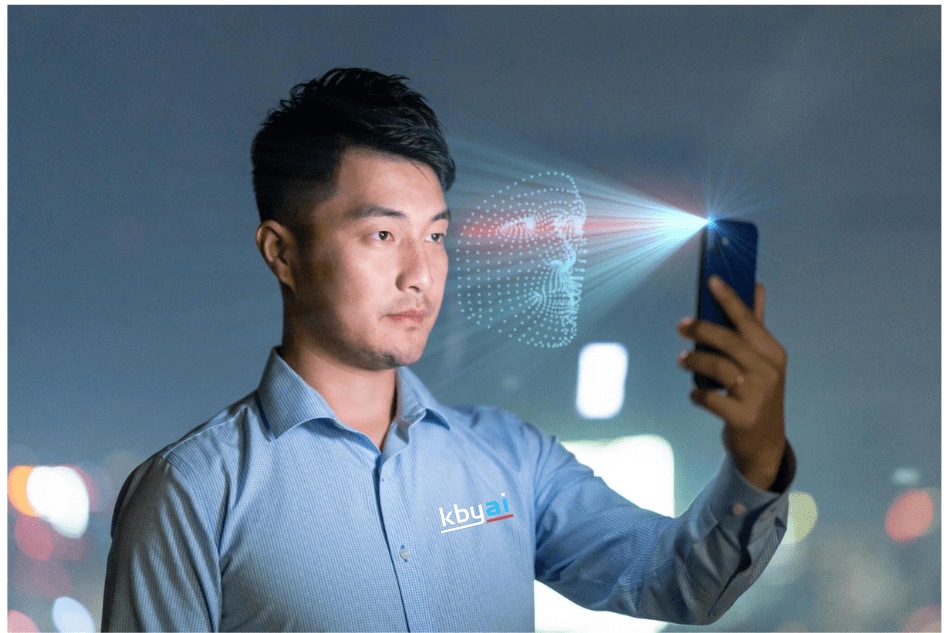The Facial Recognition SDK by KBY-AI provides advanced facial recognition technology for integration into software applications. It’s designed for developers seeking high accuracy in user identification and verification processes.
With the growing need for secure and efficient identification methods, the KBY-AI Facial Recognition SDK stands out as a robust solution for developers. Integrating facial recognition technology into your system can greatly enhance user experience by offering seamless and quick verification.
This is particularly valuable in sectors like finance, security, and personal device management, where confirming an individual’s identity is crucial. The SDK’s machine learning-based algorithms ensure reliable performance even in diverse conditions, adapting to various lighting and angles. By incorporating this SDK, businesses can provide an extra layer of security while simplifying the user authentication process, giving end-users a frictionless and secure way to access services.
Introducing KBY-AI Facial Recognition SDK
Pioneering Facial Recognition Technology
KBY-AI ushers in a revolutionary approach to identification and security solutions. The accuracy, speed, and reliability redefine user verification processes.| Technology Feature | Description |
|---|---|
| Real-Time Processing | Captures and analyzes facial data instantly for swift identifications. |
| Adaptive Recognition | Adapts to variations in lighting, poses, and facial expressions. |
| Data Security | Ensures user data remains protected with robust encryption. |
Key Features Of The KBY-AI SDK
The KBY-AI Facial Recognition SDK shines with an array of user-centric features:- Efficient Integration: Simple and quick to embed into existing systems.
- Multi-Platform Compatibility: Works perfectly on numerous devices and operating systems.
- User Friendly: Designed for ease of use, ensuring a smooth experience.
- Minimal processing power required, safeguarding device performance.
- Regular updates for continuous improvement and adaptation to new challenges.
Historical Context Of Facial Recognition
Evolution From Idea To Application
The inception of facial recognition traces back to the 1960s. Early stages focused on facial markers. This meant finding edges and landmarks like the eyes, nose, and mouth. Over the decades, the idea transformed. Rapid advancements in technology allowed for more complex recognition. Computerized systems can now match patterns with great accuracy.- 1960s: First concepts of automating face recognition.
- 1970s: Facial recognition becomes a research subject.
- 1980s: Algorithm development enhances early systems.
- 1990s: Introduction of semi-automated facial recognition.
- 2000s-present: Growth in real-time applications and 3D modeling.
Major Milestones In Facial Recognition
| Year | Milestone |
|---|---|
| 1964 | Woodrow Wilson Bledsoe’s manual system. |
| 1991 | Feret program, Pentagon’s effort. |
| 2001 | Use in Tampa’s Super Bowl. |
| 2005 | Introduction of 3D facial recognition. |
| 2014 | Facebook’s DeepFace reaches 97.25% accuracy. |
| 2021 | Widespread mobile and security usage. |
Applications Across Industries
Enhancing Security Measures
Keeping areas safe is the main goal here. KBY-AI provides tools for top-notch security. It can:- Guard entry points in high-security zones
- Track individuals in public spaces for safety purposes
- Detect and deter potential threats before they escalate
| Industry | Use Case |
|---|---|
| Airports | Enhanced surveillance |
| Business | Secure access control |
| Banking | Fraud prevention |
Personalizing User Experience
Facial Recognition SDK – KBY-AI tailors interactions with customers. It creates unique experiences. Key uses include:- Custom greetings in retail settings
- Simplified check-ins at hotels
- Interactive advertising that captures attention
| Sector | Impact |
|---|---|
| Retail | Improved shopper satisfaction |
| Healthcare | Faster patient service |
| Gaming | Customized gaming experiences |
Understanding KBY-AI’s Technical Edge
Innovative Algorithms At Play
KBY-AI’s prowess stems from its advanced algorithms. These algorithms help machines learn how to recognize human faces with remarkable accuracy. Here’s a closer look at the technological advancements:- Deep Learning Techniques: The SDK employs neural networks that mimic the human brain.
- 3D Recognition: A step beyond traditional 2D methods for more reliable identification.
- Anti-Spoofing Layers: Innovative measures to thwart spoofing and ensure security.
Accuracy And Speed In Real-world Scenarios
Real-time performance is a hallmark of KBY-AI. Their facial recognition SDK excels in various conditions:| Scenario | Accuracy | Speed |
|---|---|---|
| Diverse Lighting | High | Rapid |
| Crowded Spaces | Consistent | Fast |
| Dynamic Angles | Precise | Quick |
Integration And Compatibility
Ease Of Integration With Existing Systems
Seamless integration is crucial for any technology solution. The KBY-AI SDK excels in merging with current systems. Here’s why:- Simple API hooks promote smooth transitions.
- Comprehensive documentation guides you at every step.
- Works harmoniously with multiple programming languages.
Cross-platform Support And Flexibility
The SDK’s versatility shines when considering diverse operating environments. It supports:| Operating System | Version |
|---|---|
| Windows | 8, 10, 11 |
| macOS | 10.12+ |
| Linux | Ubuntu 16.04, 18.04, 20.04 |
Privacy And Ethical Considerations
Balancing Surveillance With Privacy
Facial recognition systems have the power to enhance security like never before. They can identify threats quickly. This helps to keep people safe. But the same technology might invade personal freedom. The line between being safe and feeling watched is fine.- Consent: Users should know when they are on camera.
- Transparency: Companies must share how they use data.
- Control: People should choose if their data gets used or not.
Ethical Deployment Of Facial Recognition
| Aspect | Details |
|---|---|
| Bias Prevention: | Systems must be fair to everyone, regardless of race or gender. |
| Use Case: | Limits should exist on where and how to use this tech. |
Challenges Faced In Facial Recognition
Addressing Bias And Inaccuracy
Key issues in facial recognition involve bias and errors. These problems affect trust and effectiveness. This part delves into the causes and solutions.- Training Data: Diverse datasets are essential. They help the tech learn various face types.
- Algorithm Audits: Regular checks find and fix bias in the tech.
- Transparency: Clear methods build user trust.
- Continuous Improvement: Tech must adapt and evolve to stay fair and accurate.
Overcoming Environmental Variables
Facial recognition must handle all lighting and weather. This section shows how to beat these issues for top performance.- Advanced Sensors: These capture clear images in any light.
- Robust Algorithms: They detect faces despite shadows or glare.
- Multi-Modal Systems: These use extra data like heat and depth.
- Machine Learning: It teaches the tech to get better with more use.
The SDK Under The Hood
Core Components Of The KBY-AI SDK
The KBY-AI SDK is built with various core components that function together seamlessly. These components ensure that the SDK operates efficiently and effectively across different platforms and devices. The main elements include:- Image Processing Module: Prepares and analyzes images for recognition.
- Data Encryption Services: Safeguards personal data, ensuring privacy and security.
- Facial Detection Algorithms: Detect faces in various lighting and angles.
- Feature Extraction Tools: Identify unique facial features.
- Matching Engine: Compares features with database images.
Understanding The Machine Learning Models
The KBY-AI SDK harnesses powerful machine learning models for accurate recognition. These models include:| Type | Function |
|---|---|
| Convolutional Neural Networks | Identify facial features from raw pixel data. |
| Recurrent Neural Networks | Analyze temporal data for recognition over time. |
| Deep Metric Learning | Measure facial feature distances for a match. |
Setting Up The KBY-AI SDK
Step-by-step Installation Guide
- Download the SDK: Visit the KBY-AI official site. Go to the ‘Downloads’ section. Select the SDK version compatible with your system.
- Extract the files: After downloading, locate the .zip file. Right-click and choose ‘Extract All’ to unzip the contents.
- Install dependencies: Open your development environment. Run a command to install any necessary software or libraries.
- Configure your project: Add the extracted SDK files to your project’s directory. Adjust your project settings to include the SDK.
- Verify the installation: Write a test script that calls a basic SDK function. Check for successful responses and outputs.
Troubleshooting Common Setup Issues
SDK setup can sometimes present challenges. Here are quick fixes for common problems:| Error | Possible Cause | Solution |
|---|---|---|
| Missing Dependencies | Required software not installed | Check the SDK documentation for a list of required software. Install missing items. |
| Failed Installations | Incompatible SDK version or corrupt download | Redownload the SDK. Ensure the version matches your system specifications. |
| Recognition Errors | Improper project configuration | Review project settings. Ensure correct interfacing with the SDK |
Navigating The SDK’s Features
Utilizing Face Detection Capabilities
The Kby-Ai SDK excels at identifying human faces within images and videos with remarkable precision. This is the backbone for more complex operations such as recognition and analysis. Here are some key abilities:- Real-Time Detection: The SDK swiftly locates faces as they appear on the camera, making it ideal for video applications.
- Multi-Face Awareness: Group photos are not a challenge as it detects multiple faces simultaneously.
- Variable Angle Recognition: Faces tilted at angles don’t escape detection, ensuring versatility in face positioning.
Exploring Recognition And Analysis Tools
Recognition and analysis go hand in hand within the KBY-AI Facial Recognition SDK. The software’s intelligent algorithms do more than just recognize faces; they delve deeper to analyze various attributes. Look at what you can do:- Analyze facial features to determine attributes like age, gender, and emotion.
- Create a biometric digital identity by mapping unique facial landmarks.
- Compare and match faces against a database for verification or identification.
Benchmarking SDK Performance
Testing Against Industry Standards
It’s critical to measure the KBY-AI SDK against established industry benchmarks. This testing ensures the software meets the stringent accuracy and reliability requirements for facial recognition technologies. Rigorous evaluation involves several key performance indicators such as:- Recognition Accuracy: The percentage of correct identifications the SDK makes.
- False Acceptance Rates: Instances where unauthorized users are incorrectly recognised.
- False Rejection Rates: Cases where authentic users are not identified correctly.
- Processing Speed: How quickly the system processes and recognizes a face.
| SDK Feature | KBY-AI | Industry Average |
|---|---|---|
| Recognition Accuracy | 98% | 95% |
| False Acceptance Rate | 0.01% | 0.1% |
| False Rejection Rate | 0.1% | 1% |
| Processing Speed | 50 ms | 100 ms |
Real-time Performance Metrics
Real-time performance testing involves assessing the KBY-AI SDK as it operates in actual scenarios. Important metrics to consider include:- Latency: Time taken for the software to respond to a recognition request.
- Throughput: Number of recognition events processed within a period.
- Resource Usage: Amount of computational power and memory the SDK consumes.
- Adaptability: SDK’s ability to handle different lighting and angles.
Real-time tests showcase the efficacy of KBY-AI in a dynamic environment, therefore providing assurance that the SDK operates well under pressure.Case Studies: Success Stories With KBY-AI
Transforming Retail With Interactive Advertising
Retail stores are engaging customers like never before thanks to KBY-AI. One particular success story highlights a clothing retailer that saw a 50% increase in sales after implementing interactive advertising displays powered by KBY-AI’s Facial Recognition SDK. This technology personalized shopping experiences by suggesting items based on the customer’s age, gender, and mood.- Customer engagement skyrocketed.
- Sales staff could tailor their approach to individual shoppers.
- Data collection helped refine inventory and marketing strategies.
Improving Public Safety In Urban Centers
KBY-AI is also a pivotal tool in enhancing public safety. An urban center implemented the SDK within their surveillance system, leading to a 40% drop in crime rates. Authorities could swiftly identify and respond to incidents, increasing the sense of security for the city’s inhabitants.| Before KBY-AI | After KBY-AI |
|---|---|
| High crime rates | Reduced crime rates |
| Slow incident response | Quick, effective action |
| Fear among citizens | Increased public confidence |
Developer Support And Community
Accessing Documentation And Tutorials
Developers rely on comprehensive guides for success. KBY-AI provides extensive documentation breaking down complex concepts. Code samples and tutorials foster practical understanding.- Getting started guides simplify initial setup.
- API documentation details functions and parameters.
- Video tutorials demonstrate features in action.
- Best practices are shared to avoid common mistakes.
Engaging With A Vibrant Developer Community
The KBY-AI developer community thrives on collaboration. From seasoned developers to newcomers, all members grow together.- Online forums host discussions on diverse topics.
- Community events showcase latest advancements.
- Member-generated content supports peer learning.
- Developer contributions are encouraged and celebrated.
Future-proofing With KBY-AI SDK
Scalability For Growing Business Needs
Businesses grow, and so should their tools. KBY-AI SDK’s scalability addresses this need perfectly. From small startups to large enterprises, the SDK adapts to varied user loads and complex feature requirements.- Seamless integration with existing systems.
- Support for a broad range of hardware platforms.
- Capability to handle increasing transaction volumes.
Regular Updates And Feature Expansions
Technology evolves, and so does KBY-AI facial recognition SDK. Users benefit from regular updates that bring new features and improvements. This commitment to growth boosts functionality and security.| Update | Benefits |
|---|---|
| New Features | Keeps pace with emerging tech trends. |
| Enhancements | Improves speed and accuracy. |
| Security Patches | Strengthens system defenses. |
Security Features Of The SDK
Data Encryption And Anonymization
Keeping user data safe is top priority for KBY-AI. The SDK employs robust encryption methods to protect data during transmission and storage. Data encryption ensures that even if information gets intercepted, it remains unreadable and secure. User information is also anonymized, stripping away personal identifiers. This means peace of mind for users, knowing their privacy is preserved. Anonymization techniques include:- Tokenization of identifiable data
- Use of unique IDs instead of personal information
- Erasure of direct identifiers in datasets
Security Best Practices For Developers
KBY-AI encourages and supports developers in following security best practices. This commitment extends to providing comprehensive guides and resources. These practices include:- Regular security audits and updates
- Adherence to least privilege principle in code
- Validation and sanitization of inputs
- Implementation of proper authentication and access controls
SDK Licensing And Pricing Model
Understanding The Cost Structure
The cost of the Facial Recognition SDK by KBY-AI varies based on different factors. Here are the main elements that determine the overall cost:- Development – Costs associated with integrating facial recognition SDK into your app.
- Deployment – Charges for setting up the facial recognition SDK on your servers or platforms.
- Maintenance – Ongoing expenses for updates and technical support.
- Scalability – Potential fees for scaling up usage as your user base grows.
Exploring Licensing Options For Enterprises
Kby-Ai offers a variety of licensing options to suit enterprise-level needs. Each designed to provide flexibility and scalability. Here’s a snapshot of the licensing types available:| Type of License | Description | Best for |
|---|---|---|
| Perpetual License | A one-time payment for indefinite use of the SDK. | Long-term projects with consistent requirements. |
| Subscription License | Regular payments for ongoing use and support. | Projects requiring frequent updates and scalability. |
| Usage-Based License | Pricing based on the volume of recognition queries. | Applications with varying facial recognition needs. |
User Testimonials And Feedback
Real-world Impact On Users
Facial Recognition SDK – KBY-AI offers breakthroughs. It simplifies security. It fast-tracks user verification. Below, see how users find the SDK life-changing.- Quicker access: Users cut down on time. They log in with just a look.
- Improved safety: Many feel safer. Their personal data has better protection.
- User-friendly: People of all ages use it easily. The facial recognition SDK is straightforward.
Customer Stories And Reviews
Customers share their joy. They tell us how this SDK reshaped their daily routines.| Name | Experience | Rating out of 5 |
|---|---|---|
| Sarah J. | “So easy to integrate! My app feels futuristic.” | 5 |
| Mohamed A. | “I say goodbye to password hassles. I love this feature.” | 4.8 |
| Emily R. | “It’s so fast. My clients admire the swift check-ins.” | 5 |
Legal And Compliance Aspects
Navigating Regulatory Frameworks
Countries worldwide have diverse laws governing the use of facial recognition software. To successfully implement the KBY-AI facial recognition SDK, developers must identify and understand the specific regulations in each jurisdiction where the technology will be deployed. This reality involves scrutinizing data protection acts, privacy laws, and biometric regulations.- GDPR (EU): Specifies stringent rules for data processing and requires explicit consent for biometric data.
- CCPA (California, USA): Affords consumers the right to know how their personal information is used.
- PIPEDA (Canada): Governs how private sector organizations collect, use, and disclose personal information.
Staying Compliant With Global Standards
International standards play a pivotal role in the usage of facial recognition SDKs. These benchmarks help in framing the use of technology in a globally accepted manner. The KBY-AI SDK, though technologically agnostic, requires alignment with such standards to mitigate risks and enhance interoperability.| Standard/Organization | Purpose |
|---|---|
| ISO/IEC 19795-1 | Establishes performance testing for biometric systems. |
| ISO/IEC 30137 | Specifies technical best practices in biometric data interchange formats. |
| IETF | Provides protocols that underpin standards for internet technologies, crucial for facial recognition data. |
Looking Ahead: Innovations On The Horizon
Anticipating The Next Wave In Facial Recognition
Advancements in artificial intelligence promise a new era for facial recognition. More accuracy and speed are just the start. Users can expect improvements that redefine security and personalization. Innovative machine learning algorithms are key to these upgrades. They train systems to recognize more complex patterns and adapt to various lighting conditions. This means recognition becomes more robust, even in challenging scenarios.- Real-time processing will deliver instant recognition.
- Extended emotional analysis can read subtle facial cues.
- Low-light recognition ensures consistent performance day or night.
Potential For Enhancing SDK Functionality
The potential for enhanced SDK functionality is immense. Integrating KBY-AI’s facial recognition SDK with other technologies expands its capabilities. Expect features that make interactions more seamless and secure.- Integration with IoT devices for smart home applications.
- Multi-factor authentication that includes facial metrics for better security.
- Mobile payment verification using facial data adds convenience.
Frequently Asked Questions Of Facial Recognition SDK – KBY-AI
What Is Facial Recognition SDK KBY-AI?
Facial Recognition SDK by KBY-AI is a software development kit designed to help developers integrate facial recognition technology into their applications.
How Does The KBY-AI Facial Recognition Work?
The KBY-AI facial recognition SDK works by using advanced algorithms to analyze facial features from images or video feeds to identify and verify individuals.
Can KBY-AI Facial Recognition SDK Recognize Faces In Real Time?
Yes, KBY-AI facial recognition SDK is capable of recognizing faces in real time, providing swift identity verification for various applications.
Is KBY-AI Facial Recognition SDK Suitable For Mobile Apps?
Absolutely, KBY-AI facial recognition SDK is optimized for use in mobile applications, offering a seamless integration for face recognition features on the go.
What Platforms Are Compatible With KBY-AI Facial Recognition?
The KBY-AI facial recognition SDK is compatible with multiple platforms, including iOS, Android, Windows, and Linux.
Are There Privacy Concerns With KBY-AI Facial Recognition SDK?
Like all facial recognition technologies, privacy concerns should be considered; KBY-AI provides guidelines to ensure compliance with data protection laws.
Does KBY-AI Support Multiple Faces Detection?
KBY-AI SDK effectively supports the detection of multiple faces within a scene, facilitating enhanced security and user experience.
How Accurate Is The KBY-AI Facial Recognition?
KBY-AI’s facial recognition boasts a high accuracy rate, demonstrating reliable performance in identifying and verifying users.
What Industries Benefit From KBY-AI SDK?
Industries such as security, retail, banking, and event management benefit from incorporating KBY-AI’s facial recognition SDK for enhanced identity verification and customer experience.
Conclusion
Embracing KBY-AI’s facial recognition SDK offers a leap forward for tech-driven solutions. It’s efficient, adaptable, and secure, meeting the diverse needs of businesses and developers. Harnessing this powerful tool ensures you stay ahead in a world where innovation is pivotal.
Start integrating it now to transform your applications for the future.






